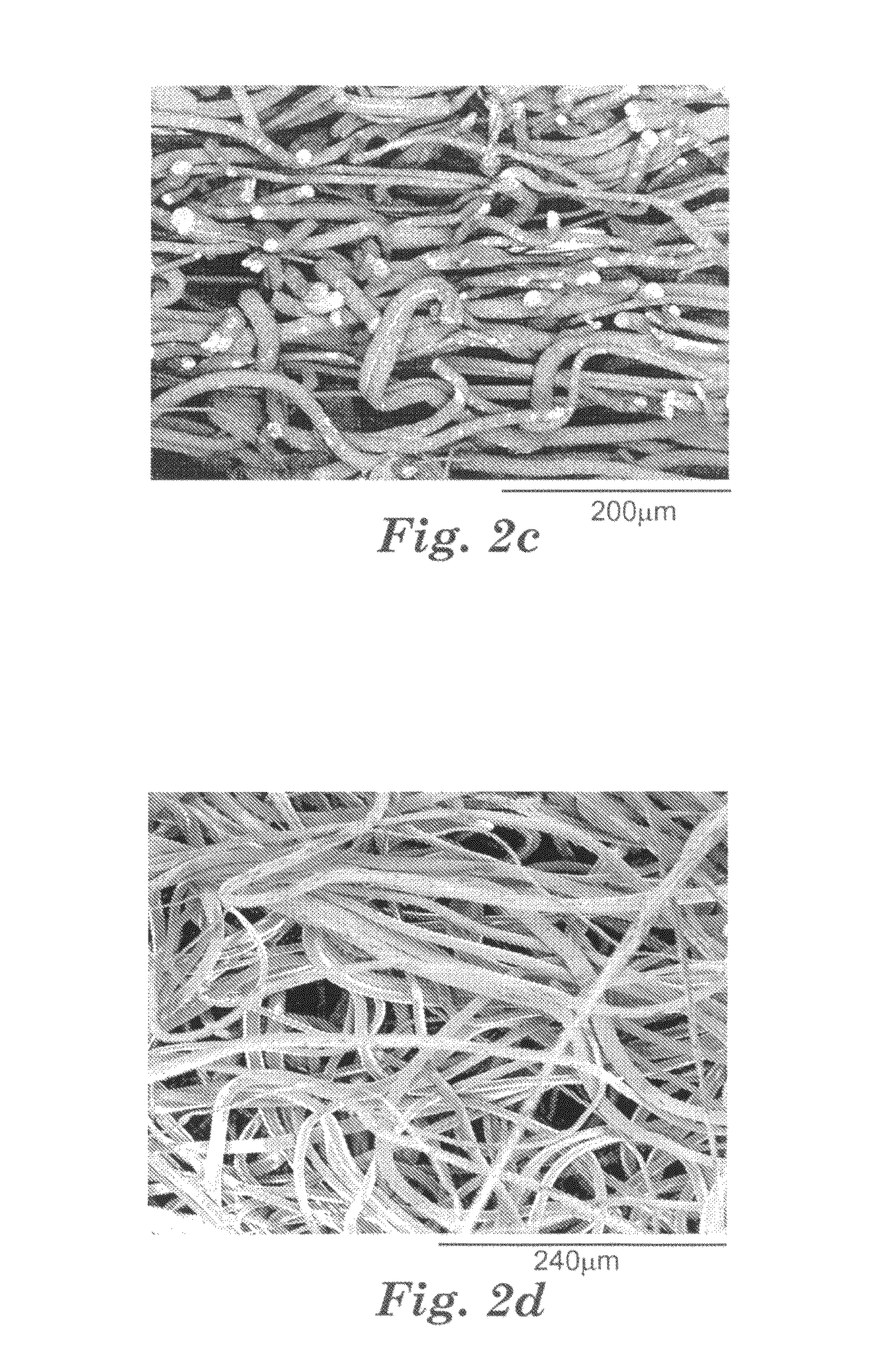Melt blown fiber forming process and method of making fibrous structures
a technology of polymer fibers and forming processes, which is applied in the direction of filament forming substances, machine/engines, group 5/15 element organic compounds, etc., can solve the problems of excessive polymer degradation, weak and brittle fiber webs, and fibrous webs and other fibrous structures made with such fibers that exhibit excessive shrinkage or otherwise poor dimensional stability, and achieve low cost , reduce shrinkage, the effect of increasing the dimensional stability
- Summary
- Abstract
- Description
- Claims
- Application Information
AI Technical Summary
Benefits of technology
Problems solved by technology
Method used
Image
Examples
example 1
[0071]A PET meltblown microfiber web of the present invention was prepared using type 8416 PET resin and EXOLIT™ OP950 additive using the following procedure. A masterbatch of the 8416 PET (97.5 wt %) and EXOLIT™ OP950 additive (2.5 wt %) was prepared using an Ultra Glide 25 mm twin-screw extruder (Krass Maffei Kumstofftechnik-Berstorff, Munich Germany) (co-rotating, with ten zones) using a melt temperature of 280° C. The masterbatch was pelletized using a conventional strand die / water trough / pelletizer apparatus. The masterbatch pellets were then extruded into microfiber webs by a process similar to that described in Wente, Van A., “Superfine Thermoplastic Fibers” in Industrial Engineering Chemistry, Vol. 48, pages 1342 et seq (1956), or in Report No. 4364 of the Naval Research Laboratories, published May 25, 1954 entitled “Manufacture of Superfine Organic Fibers” by Wente, Van. A. Boone, C. D., and Fluharty, E. L. except that a 31 mm (0.75 in.) Brabender conical twin screw extrude...
example 2
[0072]A PET meltblown microfiber web was made as in Example 1 above except 5 wt % of zinc diethylphosphinate (ZDP) was compounded into the type 8416 PET resin and the melt pump speed was 70 rpm. The primary air temperature and pressure were, respectively, 350° C. and 48 kPa (7 psi). The resulting nonwoven web had an average fiber diameter of 9.0 microns and a basis weight of 166 g / m2. The nonwoven web was tested for shrinkage, mechanical and flame retardancy properties as described above and are reported in Tables 1-3 above. A FESEM image of a cross-section of the web is shown in FIG. 1b.
example 3
[0073]A PET meltblown microfiber web was made as in Example 1 above except 10 wt % of ZDP was compounded into the type 8416 PET resin and the melt pump speed was 50 rpm. The primary air temperature and pressure were, respectively, 350° C. and 62 kPa (9 psi). The resulting nonwoven web had an average fiber diameter of 10.4 microns and a basis weight of 163 g / m2. The nonwoven web was tested for shrinkage, mechanical and flame retardancy properties as described above and are reported in Tables 1-3 below. A FESEM image of a cross-section of the web is shown in FIG. 1c.
PUM
| Property | Measurement | Unit |
|---|---|---|
| diameter | aaaaa | aaaaa |
| temperature | aaaaa | aaaaa |
| temperature | aaaaa | aaaaa |
Abstract
Description
Claims
Application Information
 Login to View More
Login to View More - R&D
- Intellectual Property
- Life Sciences
- Materials
- Tech Scout
- Unparalleled Data Quality
- Higher Quality Content
- 60% Fewer Hallucinations
Browse by: Latest US Patents, China's latest patents, Technical Efficacy Thesaurus, Application Domain, Technology Topic, Popular Technical Reports.
© 2025 PatSnap. All rights reserved.Legal|Privacy policy|Modern Slavery Act Transparency Statement|Sitemap|About US| Contact US: help@patsnap.com



